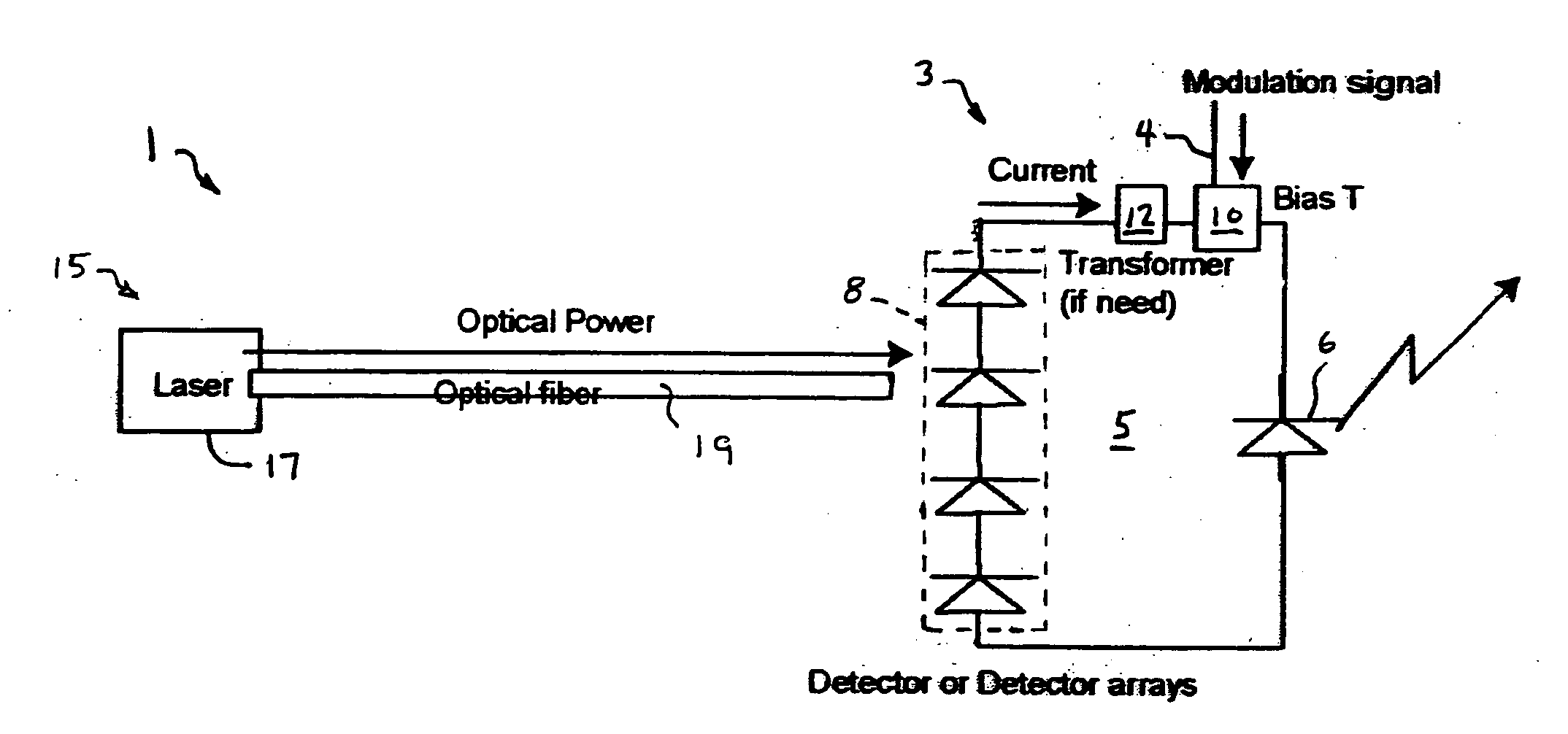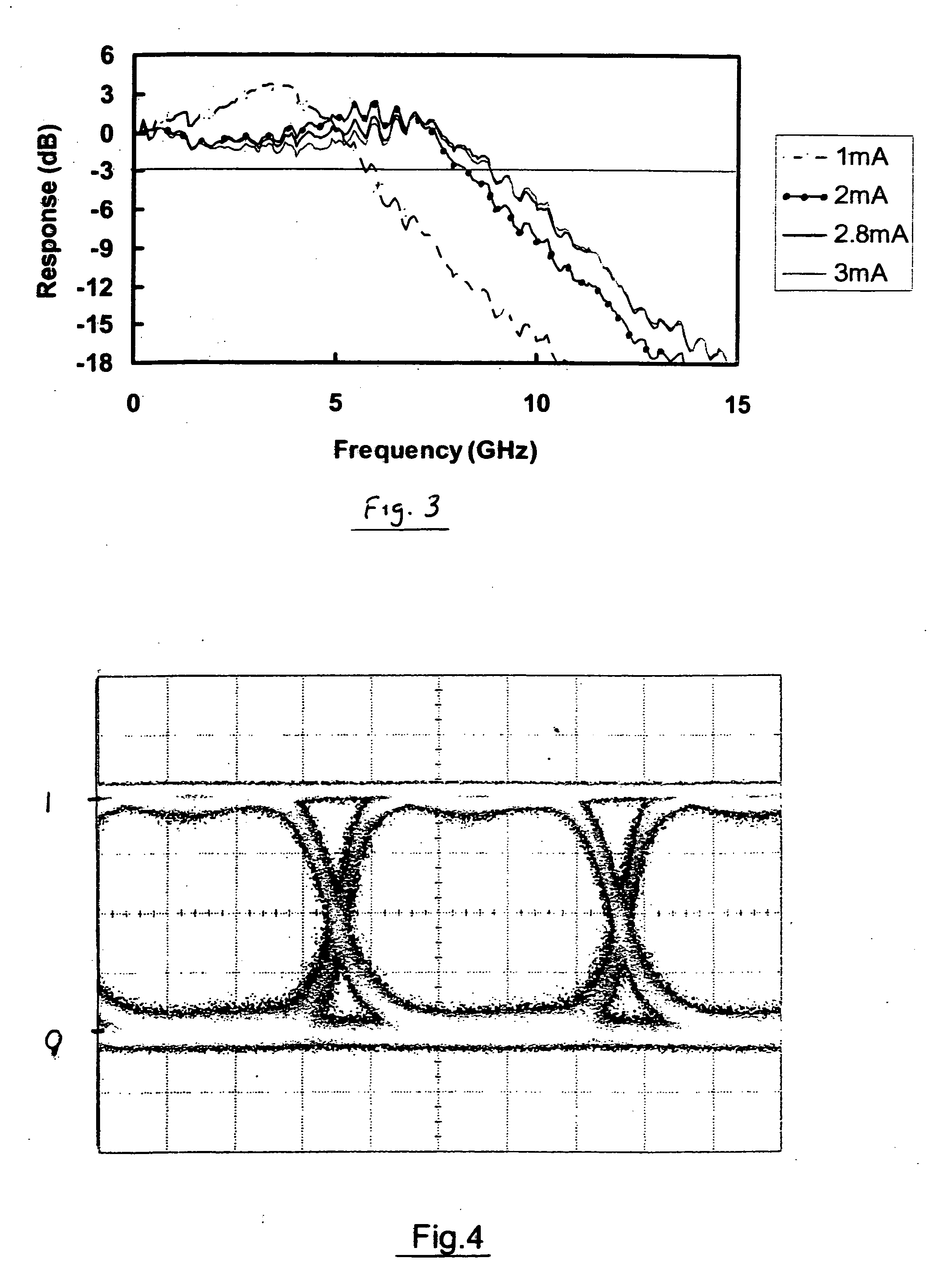System and method for optically powering a remote network component
a technology of optical network and remote network component, which is applied in the field of system and method for optical network remote network component powering, can solve the problems of disadvantage, high cost, and difficulty in adding such power lines, and achieve the effects of enhancing the reliability of the resulting network, low cost, and easy operation
- Summary
- Abstract
- Description
- Claims
- Application Information
AI Technical Summary
Benefits of technology
Problems solved by technology
Method used
Image
Examples
Embodiment Construction
[0018] With reference now to FIG. 1, wherein like numbers designate like components throughout all the several figures, the system 1 of the invention includes a remote component 3 of a network (not shown) that processes an input signal. The remote component 3 includes input signal source 4 connected to a circuit 5 that includes a VCSEL 6, a photodetector array 8 and a bias tee 10. A DC transformer 12 may also be included in the circuit 5 to adjust the voltage versus amperage of the power generated by the photodetector array 8 in order to maximize the photonic output of the VCSEL 6. Accordingly, the use of such a component is generally not preferred.
[0019] The system 1 further includes a remote optical power source 15 which in the example of FIG. 1 is formed by a laser light source 17 having an output connected to an optical fiber 19. Fiber 19 in turn is optically coupled to the photodetector array 8. The optical power source 17 may be formed from any one of a number of commercially...
PUM
 Login to View More
Login to View More Abstract
Description
Claims
Application Information
 Login to View More
Login to View More - R&D
- Intellectual Property
- Life Sciences
- Materials
- Tech Scout
- Unparalleled Data Quality
- Higher Quality Content
- 60% Fewer Hallucinations
Browse by: Latest US Patents, China's latest patents, Technical Efficacy Thesaurus, Application Domain, Technology Topic, Popular Technical Reports.
© 2025 PatSnap. All rights reserved.Legal|Privacy policy|Modern Slavery Act Transparency Statement|Sitemap|About US| Contact US: help@patsnap.com



